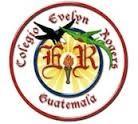
10th grade Atomic structure and theories
Quiz by Jaime
Feel free to use or edit a copy
includes Teacher and Student dashboards
Measure skillsfrom any curriculum
Measure skills
from any curriculum
Tag the questions with any skills you have. Your dashboard will track each student's mastery of each skill.
With a free account, teachers can
- edit the questions
- save a copy for later
- start a class game
- automatically assign follow-up activities based on students’ scores
- assign as homework
- share a link with colleagues
- print as a bubble sheet
82 questions
Show answers
- Q1The smell of the ocean is caused by atoms.TRUEFALSE45s
- Q2John Dalton was the first person recorded as thinking that matter was ultimately composed of atoms.FALSETRUE45s
- Q3John Dalton formalized an atomic theory that gained acceptance in the early 19th century.TRUEFALSE45s
- Q4The plum pudding model proposed that negatively charged electrons were held in a sphere of positive charge.FALSETRUE45s
- Q5All of the positive charge of an atom is concentrated in the nucleus.TRUEFALSE45s
- Q6J.J. Thomson discovered the existence of protons.TRUEFALSE45s
- Q7Ernest Rutherford proved the existence of electrons.FALSETRUE45s
- Q8The gold foil experiment proved that large regions of the atoms consisted of empty space.TRUEFALSE45s
- Q9The nucleus of an atom is a very small, dense region that contains over 99.9% of the atomic mass.FALSETRUE45s
- Q10Protons and electrons each have a mass of 1 amu.FALSETRUE45s
- Q11A positive charge attracts negative charges and repels other positive charges.TRUEFALSE45s
- Q12The mass of a proton is exactly the same as the mass of a neutron.FALSETRUE45s
- Q13The charges on electrons and neutrons cancel each other to give neutral atoms.TRUEFALSE45s
- Q14Protons and neutrons have similar masses and similar electrical charges.FALSETRUE45s
- Q15An atom containing 8 protons, 9 neutrons, and 8 electrons would be considered charge-neutral.FALSETRUE45s